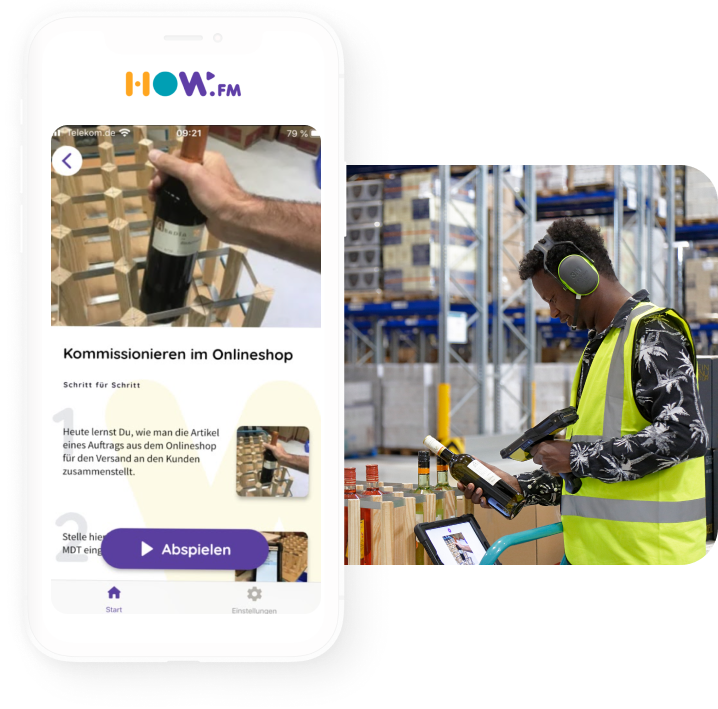Before the year 2020, only a very small percentage of the workforce was afforded the opportunity to work remotely. According to Eurostat, the official website for statistics in the European Union, 5-6% of employed people aged 20-64 usually worked from home over the past decade before the COVID-19 pandemic.
With such a low quantity of workers working in such a way at the time, there was little known about remote flexibility when it came to the workplace. Now in 2022, there has never been more of a demand for a more remote-flexible approach to work. A survey from Acas on British businesses found that 55% of employers expect an increase in staff working from home or remotely for part of the week in the future.
In such a short amount of time, the demand for remote flexibility in jobs has dramatically increased. One of the most interesting discoveries is that many industries are adapting to remote flexibility. Even industries that never thought this style of working was possible for their line of work. Warehouse jobs are a great example of this. With advancements in technology, blue-collar jobs such as warehouse work are in a position where they can offer a degree of remote flexibility.
But how can warehouse-based businesses offer a more remote flexible way of working?
And is it the correct avenue to go down for the future?
Let’s take a look and find the answers to these two vital questions.
Why You Need To Offer Remote Flexibility
Experts deem remote flexible working as ‘The future of working’. If this is true, then, current businesses that aren’t trying to adopt this into their business operations will soon be left behind. The reason is backed by the simple fact that the option for remote flexible working is becoming important to employees.
Today’s workforce holds flexibility in such high regard that workers are using it as a way of deciding where their next job opportunity lies. A survey carried out by EY found that 43% of employees would leave their current job for one with more flexible working arrangements. Blue-collar workers such as warehouse workers are not excluded from this either.
Now that today’s world holds a firm place for flexible working there is no turning back. Frankly, if you intend on attracting new employees then having a remote flexible way of working could be the deciding factor.
What Are the Benefits of Offering Remote Flexibility To Warehouse Staff
There has been a growing trend toward offering remote flexibility to warehouse staff. There are a number of potential benefits to this approach, including improved morale and reduced turnover. You can improve morale by giving employees the ability to work from home or another location that is more convenient for them.
Employees are less likely to be distracted or take time off for personal errands. This leads to increased productivity. Additionally, offering remote flexibility can help to reduce turnover as employees are more likely to stay with a company that offers this type of perk. Ultimately, offering remote flexibility to warehouse staff can provide a number of significant benefits for both the employees and the employer.
A more flexible way of working can help provide the right work-life balance for employees, which suggests that the morale of the workforce could be boosted if there was a flexible system in place.
Studies have shown that there are key advantages for your employees when they find the optimum work-life balance, including:
- Reduction in stress – a less stressed workforce means fewer sick days and an increase in overall job satisfaction
- Boosted productivity – when the workforce is productive it allows for more orders to be fulfilled and an increase in customer satisfaction
- Increased motivation – having a motivated workforce to show up each day and put in the work is what drives businesses forward
How Can You Start To Implement Remote Flexibility to Warehouse Jobs
As office-based workers are offered a more flexible work schedule because of their work set-up, blue-collar workers are wanting to reap these benefits also. Warehouse businesses now need to look at solutions that will encapsulate the very idea of remote flexible working for their workers.
As already mentioned, giving employees the ability of remote flexibility can have a number of benefits for both the business and the workers themselves. If you’re interested in implementing remote flexibility in your warehouse jobs, there are a few things you’ll need to do.
1. Set Out Clear Guidelines
You’ll need to develop clear guidelines and expectations for workers who intend on working with remote flexibility. Make sure everyone is on the same page in terms of what is expected of them.
Some employers may already have guidelines in place prior to the pandemic. However, you may need to revisit your guidelines and make some adjustments.
It’s important to clearly communicate your expectations for productivity and work hours. If you have specific deadlines or deliverables that need to be met, make sure your employees are aware of them. It’s also important to give employees some flexibility when it comes to their work hours. This may not always be possible with some warehouse jobs so be sensible in your approach. Allow employees to set their own schedules as long as they’re getting their work done.
2. Tools and Resources
Ensure sure your employees have the right tools and resources they need to be productive. This includes access to important files and documents. As well as any software or applications they need to complete customer orders.
3. Investment in Technology
Next, you’ll need to invest in the right technology to enable remote work. This includes things like video conferencing software and collaboration tools used for office-based staff. Manual handling jobs will require a significantly higher investment.
Companies such as Phantom Auto are making huge strides in this area with their remote-operated forklifts. Forklift drivers will have the potential to do their job in the comfort of their own homes; just like their office-based counterparts. Apart from the huge investment in technology, there will also be a need for training –to use these new systems.
Using warehouse training software, like how.fm, allows you to train your staff using mobiles or tablets. You can transfer all your policies & processes including health and safety training onto the content management system. You can even assign training to the employee’s device of choice. They would be able to receive the training in over 30 languages – whether at home or on the shop floor.

4. Remote Learning Days
There will be in some instances that the idea of remote flexible working is just not possible for some employees. This comes with the nature of their job so there isn’t much that can be done in terms of remote flexible working.
However, it doesn’t mean that they can never experience something that their colleagues could possibly be doing 2-3 days a week.
A way around this is to offer ‘Remote Learning Days’. Remote learning days allow employees based in a singular location the opportunity to be remote. The premise of a remote learning day is that employees can experience a more flexible way of working while also using that day to do online learning. Tsedal Neeley describes remote flexible working as one of the most vexing issues when it comes to blue-collar jobs. She suggests that remote learning days are providing stellar results as a way of overcoming this issue. You can listen to more of Tsedal’s thoughts over at the popular podcast ‘WorkLife with Adam Grant’ on the episode named ‘The Do’s and Don’ts Of Returning To The Office’.
WorkLife with Adam Grant
how.fm offers an intuitive platform that is perfect for workers to navigate when they are on these remote learning days. Our easy-to-use content management platform allows warehouse or learning managers to upload training content and other operational processes. Workers can easily access these pieces of training on their smartphones or tablets. They can leverage the time to complete training from home during their remote learning days. Thus, the company benefits from better trained and highly motivated staff.
Final Thoughts
The bottom line is that if you’re not offering remote flexibility to your warehouse staff then, you could be at risk of losing valuable team members. The good news is that by following the advice above, you can integrate the option of remote flexibility into your shop floor.
Would you like to know more about how.fm’s training software? Book a 15-mins product demo now. It’s free and you don’t have to commit to anything.
